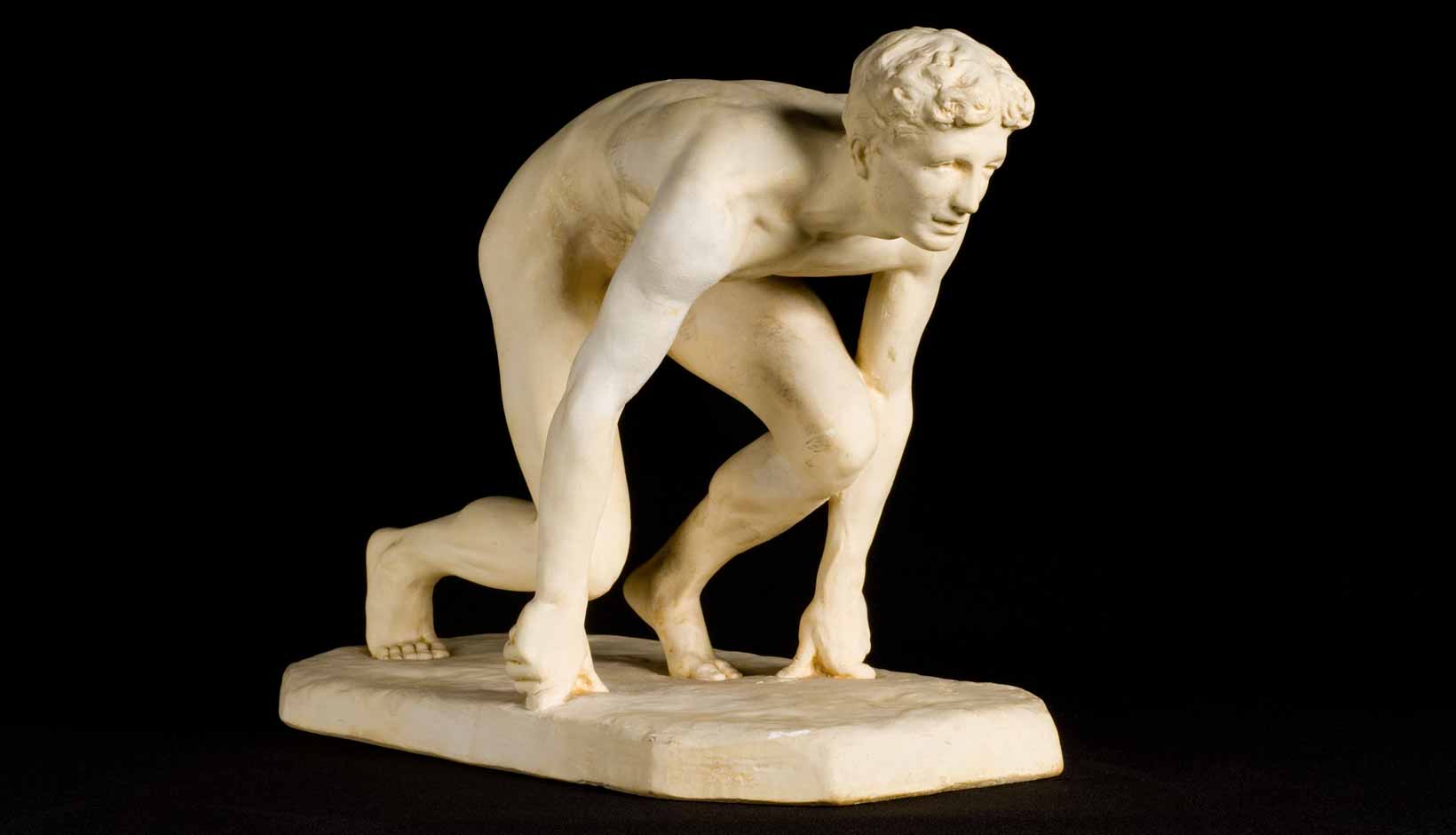Fox Chase
Harry Hoffman
- Museum Hours: Tuesday through Sunday, 10am to 5pm.
Shown riding a bike with a large canvas strapped to his back in The Fox Chase, the artist Harry Hoffman brought good-natured fun and frivolity to the art colony.
He and his good friend Arthur Heming arrived in Old Lyme as early as 1902 as art students of Frank Vincent DuMond. The two were not invited to stay at the boardinghouse (the artists discouraged Miss Florence from renting to students), but they did take their meals there and became friends with the artists — as their placement in the panel proves.
Harry Leslie Hoffman
Born March 16, 1871, Cressona, Pennsylvania
Died March 6, 1964, Old Lyme, Connecticut
In Old Lyme, summers 1902-1909; permanently, 1910-1966
Hoffman came to Old Lyme as a student, but quickly became accepted as a member of the art colony, leading the artists in fun and musical entertainment. Hoffman met his wife, Beatrice, in Old Lyme and they built a house on Harding Hill they called Chuluota, a Native American word meaning “beautiful view.” He decorated the dining room with large paintings of underwater scenes. Hoffman would paint underwater scenes after looking through a glass-bottom bucket to see the fish and coral reefs in the tropics.
Once established as true professionals and welcomed as colony members, Hoffman often led the group’s entertaining antics.
He was an accomplished musician who would share his talents in the impromptu musicales in the parlor during summer evenings. According to his good friend Heming, Hoffman “generously afforded entertainment . . . with his tap-dancing, his sleight-of-hand tricks, his playing upon his banjo and flute, his wit and humor, and his laughter-provoking singing.”
Hoffman chose to be an artist although he had been offered a handsome salary to pitch for a professional baseball team.
After making this decision, he threw himself into his craft and was determined to make good use of his artistic time in Old Lyme. However, his heart got the better of him and he would steal away on moonlit canoe rides with Beatrice Pope, a young lady also staying with Miss Florence, and serenade her on the flute. They were married in 1910. The young couple spent their honeymoon in Spain, where Harry was arrested when he was mistaken for a British spy while sketching in a sensitive location in Palos. Upon their return to the United States, they moved into a large house off Sill Lane in Old Lyme, just up the road from the boardinghouse. They named the house Chuluota a Native American word meaning “beautiful view” and Harry painted murals in their dining room.
By the 1920s, Hoffman was gaining a reputation as a painter of underwater scenes. Since this predates diving helmets, Hoffman would use a water-glass (a bucket with a glass bottom) to see beneath the waves. In this way, he would paint what he described as “the wave shadows traveling over the bottom of the sea with the fishes and their usual co-inhabitants moving around as though they were birds of the air. A nature kaleidoscope.” His keen observations of this undersea world led to invitations to accompany scientists on their expeditions to the Galapagos Islands in 1923 and later to Bermuda. He would paint hundreds of underwater scenes, several of which were then translated into weavings by his wife Beatrice.



 Artists on the front porch of the Griswold House, c. 1902
Artists on the front porch of the Griswold House, c. 1902




